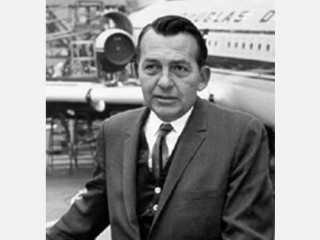
Donald Wills Douglas biography
Date of birth : 1892-04-06
Date of death : 1981-02-01
Birthplace : Brooklyn, New York, U.S.
Nationality : American
Category : Arhitecture and Engineering
Last modified : 2011-02-24
Credited as : aeronautical engineer , Cloudster, The Robert J. Collier Trophy
The American aeronautical engineer Donald Wills Douglas developed and manufactured aircraft that dominated the world market for many years.
Donald Wills Douglas was born on April 6, 1892, in Brooklyn, New York. From an early age young Donald showed an interest in the then brief history of manned flight. After high school, he attended Trinity Chapel School for college, where he was editor of the school magazine. He was appointed to the U.S. Naval Academy at Annapolis in 1909, where he became enthusiastic about the infant field of aviation. During this time he even got to see the Wright Brothers demonstrating their latest plane. In 1912 he entered the Massachusetts Institute of Technology; after two years of early wind tunnel research he became the first man to receive a bachelor of science degree in aeronautical engineering from that school.
Douglas first worked in 1915 at the Connecticut Aircraft Company on the Navy's first dirigible. That same year he joined Glenn L. Martin's aircraft firm as chief engineer. The following year he went to Washington as chief civilian aeronautical engineer for the U.S. Army Signal Corps. Within a few months he resigned over a dispute with the War Production Board and returned to the Martin Company. In 1916 he married Charlotte Marguerite Ogg, with whom he had five children.
In 1920 Douglas quit the Martin Company to set up his own firm in Los Angeles. He was president of the Douglas Company until 1957. He was the first of many manufacturers to go into production permanently in Los Angeles, where the availability of capital, skilled labor, and flying weather for most of the year made an attractive package for the aeronautical industry.
Douglas's first effort was to produce a single-engine airplane, nicknamed the "Cloudster," capable of flying nonstop across the country. The "Cloudster" never made it fully cross-country, but it was the first plane capable of lifting a payload equal to its own weight, and the design was sold as a luxury aircraft. He successfully sought a contract from the U.S. Navy for airplanes and eventually became the leading manufacturer of naval aircraft. In 1932 Douglas and other firms were asked by Transcontinental and Western airlines to design a craft capable of traveling 1,080 miles with 12 passengers at a speed of up to 185 miles per hour. Douglas accepted the challenge and produced the DC-1 (for Douglas Commercial), which was first flown on July 1, 1933, and was able to carry 12 passengers at a cruising speed of 170 mph. An all-metal, twin-engine plane, it was one of the first to establish the usefulness of wing flaps in commercial planes. This aircraft (only one was built) was a prototype for the succeeding members of the DC family.
The most famous Douglas plane, the DC-3 in 1936, carried 21 passengers at a cruising speed of 190 mph. It was so successful that within 2 years after it first appeared, it was carrying 95 percent of the nation's civil air traffic. That same year Douglas was awarded The Robert J. Collier Trophy, aviation's highest honor, for the DC-2. During the late 1930s Douglas worked on designs for a four-engine transport, eventually designated the DC-4. Both the DC-3 and the DC-4 became the workhorses of military transport during World War II. After the war, the DC-4 became the major aircraft of the new international commercial air-routes. Douglas was an expert at the art of "stretching a design." The DC-4 was elongated to become the DC-6 and later the DC-7. The DC-7 was the first airliner that permitted nonstop coast to coast scheduling. In 1955 Douglas, whose planes were flying over half the world's passenger miles, developed the jet-propelled DC-8. It was followed by the medium-range DC-9 in 1966. It was said at the time that the DC-9, in terms of popularity, was the reincarnation of the DC-3.
The merger of the firm in 1967 with McDonnell Aircraft, to make the McDonnell-Douglas Corporation, strengthened its position in the aerospace industry. The site of the original Douglas Company plant is now The Museum of Flying. Donald Douglas passed away in 1981.
















